ZHENGYANGCHUN
4.3/5
31 Reviews
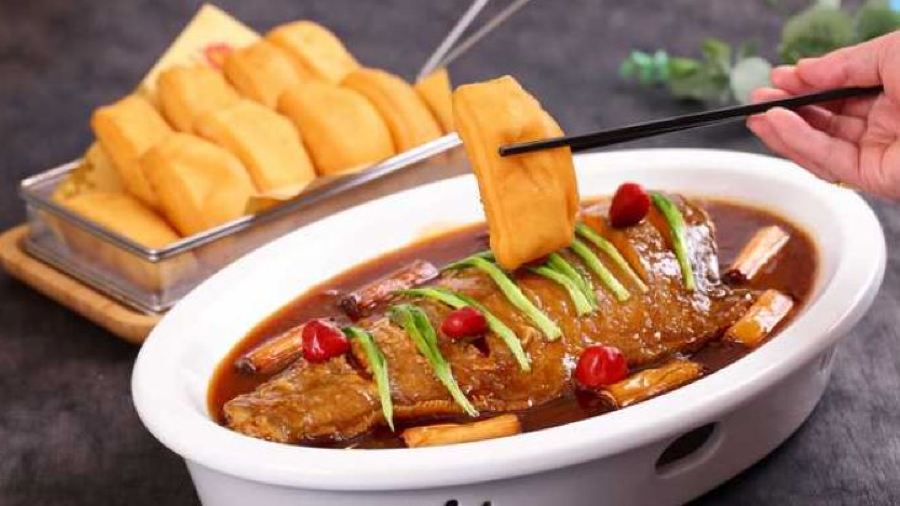
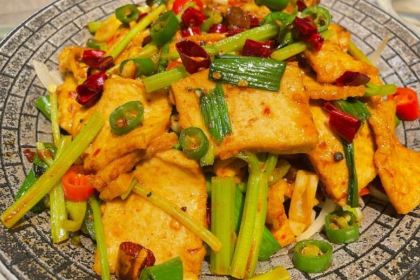
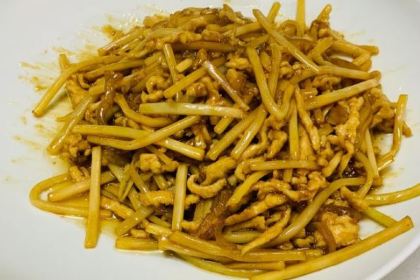
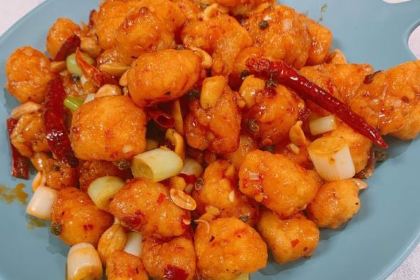
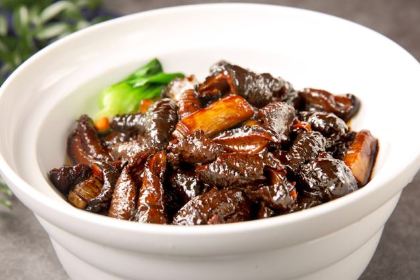
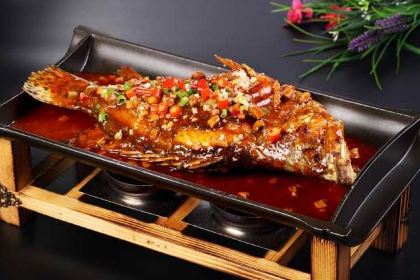
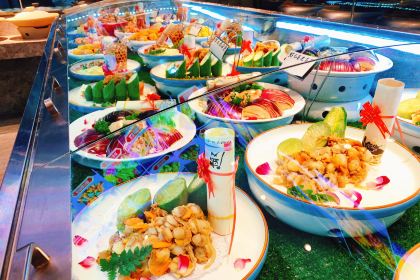
More
Currently closed|Open at 10:30 todayShow more
+8615522597059
鼓楼东街2号(檀府旁)
 曹 操Pre-meal fruit and a small portion of Lao Liuwei snacks will be given~ Three people ordered four dishes and a portion of black truffle shrimp fried rice. They were very full. The shrimp and fried rice tasted very good. The chestnut-fried baby cabbage was a bit average. I personally like the special fried cakes, but it is a little oily and not suitable to eat too much.
曹 操Pre-meal fruit and a small portion of Lao Liuwei snacks will be given~ Three people ordered four dishes and a portion of black truffle shrimp fried rice. They were very full. The shrimp and fried rice tasted very good. The chestnut-fried baby cabbage was a bit average. I personally like the special fried cakes, but it is a little oily and not suitable to eat too much.Reviews of ZHENGYANGCHUN
Some reviews may have been translated by Google Translate
4.3/5Excellent
All (31)
Latest
Photo reviews (15)
Positive reviews (7)
Negative reviews (1)
Pre-meal fruit and a small portion of Lao Liuwei snacks will be given~ Three people ordered four dishes and a portion of black truffle shrimp fried rice. They were very full. The shrimp and fried rice tasted very good. The chestnut-fried baby cabbage was a bit average. I personally like the special fried cakes, but it is a little oily and not suitable to eat too much.
The environment is very good, the dishes are rich, the roast duck is delicious, I ordered sour soup fish, the portion is very large, it is served in a large wooden barrel, and the portion of each dish is very large, not bad, thanks to Ctrip for letting me, a foreigner, find a place with good quality and low price
There are many Zhengyangchun restaurants in Tianjin, some are called Zhengyangchun Duck House Branch; some are called Zhengyangchun Roast Duck Banquet Hall; some are called Zhengyangchun Roast Duck Restaurant; and some are called Tianjin Roast Duck Restaurant (Zhengyangchun Store). For example, the one I went to today has two names, one is Zhengyangchun Tianjin Roast Duck Restaurant (Gulou Store), and the other is more high-end called Tianjin Roast Duck Restaurant (Zhengyangchun Image Flagship Store). For a restaurant, no matter how high-end the name is, it is useless. The key is the taste and service. To be honest, this Zhengyangchun is the most ordinary restaurant I have eaten in, although it hangs large photos of the great man's visit everywhere. I won't mention which one is No.1 in my heart here, so as not to be suspected of flattery, haha. Then let's objectively evaluate this Zhengyangchun Gulou Store. First of all, the service of the old brand is nothing to say, polite, enthusiastic and fast serving. Let's focus on the evaluation of the dishes. Today, let's put aside the signature roast duck, after all, roast duck is not a representative of Tianjin cuisine. Let's talk about the following three signature dishes: "Eight Treasures Tofu" may be the most ordinary of all the Tianjin restaurants I have eaten (it is strange that the taste and quality of old brands all over the country cannot catch up with the street restaurants! My personal understanding is that after the public-private partnership in the 1950s, the old brands were basically state-owned, and they lost their motivation and competitiveness compared to private enterprises, and gradually lost their luster!) First of all, the amount of seafood in the Eight Treasures is small, and as many as three kinds of mushrooms are used to fill the amount! The most embarrassing thing is that the chicken slices are actually the same as fried dough dumplings (the dough dumpling I picked up with chopsticks in the picture of this dish in this article). It smells like chicken in my mouth, but there is almost no meat inside when I bite it open. Some of the "fried dough dumplings" are still hard dough cores! Another thing is that the tofu is not crispy on the outside and tender on the inside. The skin has not been fried and the whole body is soft! The taste is too light and tasteless, it's really not delicious! The shrimps in "Shrimp and Gluten" are not fresh shrimps, but the water-soaked shrimps are acceptable because many Tianjin dishes are passed down in this way. There are not many shrimps in this dish. The most outrageous thing is that there is no saltiness at all. I even suspect that the chef forgot to add salt because he was in a hurry! It's not delicious! "Laobao San" is just average and there is nothing to say. Compared with many small restaurants, the portion is small, but it is also the best of his three signature dishes! At least it has a little salty taste! I came more like a food tasting, so I ordered these three dishes. They are not only Zhengyangchun's signature dishes, but also the representative dishes of the entire Tianjin cuisine, but the performance is not satisfactory! I originally wanted to order a braised three-shredded dish, but I was afraid that I couldn't eat it, so I didn't order it, but when I looked at the one on the next table, I secretly rejoiced that it was okay, fortunately I didn't order it! "Duck oil buns" are my favorite, but the ones here still disappoint me. The duck oil buns may be called duck oil buns because the chef's concept is too healthy. There is almost no oil and dry, no meat fragrance, only a not-so-strong five-spice powder smell! If you want to talk about Tianjin duck oil buns, you really have to go to the Zhengyangchun Tianjin Roast Duck Restaurant on Changchun Road next to Quanyechang. There is always a long queue at the takeaway window. It is really delicious with the meaty fragrance and moderate oil!
Among the treasures of Tianjin's folk art, Clay Figure Zhang undoubtedly occupies a pivotal position. Like a dazzling pearl, it shines brightly in the sky of traditional Chinese folk art with its lifelike works, exquisite and unique techniques, and profound cultural heritage. The legendary story of Clay Figure Zhang begins in the Tongzhi era of the Qing Dynasty. Its founder, Zhang Mingshan, possessed a deep interest and talent for clay sculpting from a young age. At that time, Tianjin was bustling with activity, and folk arts flourished. The young Zhang Mingshan wandered among the people, observing the myriad aspects of life, all of which provided rich material for his artistic creation. He often secretly observed the expressions and postures of passersby while drinking tea in teahouses. Unbeknownst to others, he would quickly capture the essence of the figures with his clay, and in a few strokes, he could sculpt a vivid clay figure. Over time, the name "Clay Figure Zhang" spread far and wide, becoming a legend known to everyone in Tianjin. Among these stories, the one most talked about is his encounter with the notorious bully Hai Zhangwu. Once, Hai Zhangwu acted arrogantly in a restaurant. Zhang Mingshan, who was present, calmly sculpted a clay figure in Hai Zhangwu's likeness. The next day, the streets were filled with clay figures of all sizes depicting Hai Zhangwu, sold at bargain prices. News of the "cheap sale of Hai Zhangwu" quickly spread, leaving Hai Zhangwu humiliated and helpless, demonstrating Zhang Mingshan's wit, skill, and audacity. These legendary stories not only add to the mystique of Clay Figure Zhang but also reflect the artistic charm of his works, which originate from life yet transcend it. Clay Figure Zhang's craftsmanship is unique and breathtaking. In terms of materials, Clay Figure Zhang is extremely particular about the clay. The selected clay must be fine-textured and of moderate viscosity, undergoing multiple complex processes to become the ideal material for making clay figures. In terms of sculpting, the artist, with exquisite skill, can depict every detail of the clay figure, such as the expression, the texture of the clothing, and the movement of the fingers, with lifelike realism. The figures' expressions are rich and vivid, conveying joy, anger, sorrow, and happiness through subtle changes in facial muscles, as if each clay figure possesses its own soul. The use of color is another highlight of Zhang's clay figurine craftsmanship. Its colors are bright yet elegant, drawing inspiration from traditional painting color schemes while incorporating festive and vibrant elements of folk art. The skillfully mixed colors, after careful blending and painting, not only make the clay figures more lifelike but also endow the works with a unique artistic style and cultural connotation. Zhang's clay figurine art has a far-reaching influence, spreading throughout China and even reaching the world stage. Domestically, Zhang's clay figurines are present in many cultural exchange activities, serving as an important window showcasing the charm of traditional Chinese folk art. Excellent Zhang's works are collected by major museums and art galleries, becoming important physical evidence of the inheritance of Chinese culture. Internationally, Zhang's clay figurines, with their unique oriental charm and exquisite craftsmanship, have attracted the attention of countless foreigners. Many foreign friends cherish Zhang's works, regarding them as precious art treasures, which has greatly enhanced the world's understanding and appreciation of traditional Chinese culture. In today's era of cultural diversity, the Zhang Clay Figures tradition remains steadfast, maintaining its unique artistic charm and social standing. It is not only a symbolic representation of Tianjin's local culture, embodying the city's historical heritage and folk customs, but also an outstanding representative of the excellent traditional culture of the Chinese nation, inheriting the wisdom and diligence of our ancestors. The Zhang Clay Figures tradition has been passed down through generations of artisans' dedication and innovative development. The new generation of Zhang Clay Figure artists, while inheriting traditional techniques, continuously incorporates elements of the new era, resulting in richer and more diverse themes and more novel and unique forms of expression. Tianjin Zhang Clay Figures is a legendary history book telling the story of folk artists' wisdom and creativity, depicting the myriad aspects of human life with their fingertips; it is also a cultural bridge connecting the past and present, carrying the profound cultural heritage of the Chinese nation and continuously writing its glorious chapter. In the years to come, it is believed that the Zhang Clay Figures tradition will continue to radiate vitality, becoming an enduring treasure in the treasure trove of Chinese traditional folk art.
Experiencing Tianjin on a Budget of 800 Yuan for 3 Days and 2 Nights! Local Secrets Revealed: Eat Your Way to Fullness and Stay in a Western-Style House on the Five Great Avenues Sisters, stop thinking that municipalities equal expensive travel! I just took my parents on a fantastic 3-day, 2-night trip to Tianjin on 800 yuan per person (excluding round-trip transportation). We ate our way through Goubuli steamed buns, jianbing guozi (Chinese crepes), laomian (noodles), mahua (fried dough twists), and tea soup, and even stayed in a century-old Western-style house guesthouse on the Five Great Avenues. My photos on WeChat Moments got tons of comments like, "Did you go to Europe?" Today's Tianjin travel guide is all about "cheap fun but incredibly stylish"—just copy it! 🗓 Itinerary|3 Days and 2 Nights Relaxed and Not Rushing Day 1: Old Town Scenery + Haihe River Night View Afternoon: Explore the Ancient Culture Street, try the clay figurines of Zhang and Erduoyan fried cakes (approximately 50 yuan per person) Evening: Visit Liang Qichao's former residence in the Italian Style Area for retro-style photos (free!) Night Cruise on the Haihe River: Take a boat trip to see the bridge lights (top night view), ticket price 60 yuan/person Day 2: Five Avenues + Binjiang Road Street Stroll Morning: Ride shared bikes through the Five Avenues, see hundreds of Western-style buildings, have a bowl of guoba cai (a type of Sichuan hot pot) on the roadside, 15 yuan for breakfast. Afternoon: Stroll along Binjiang Road + reminisce at Quanyechang, kids love "Zhengyangchun" roast duck rolls, 20 yuan for a satisfying meal. Dinner: Nanshi Food Street - a one-stop shop for Tianjin flavors - 18th Street fried dough twists, cooked pear cakes, tea soup, juanquan (a type of Tianjin roll)... 40 yuan per person for a feast! Day 3: Popular Spots + Return Trip Morning: Take photos at Xikai Church (full of French romance) + take photos of the exterior of the Porcelain House (expensive inside, better photos outside). Lunch: Have authentic Hui breakfast in the Northwest Corner (worth it even if you leave in the afternoon!), a bowl of beef offal soup + tangguozi (a type of fried dough) = 18 yuan, so delicious it'll make your soul leave your body. 💰 Total Expenses Breakdown (Based on 1 Person) Item | Cost ------ ------ Accommodation (2 nights, shared room in a guesthouse on Wudadao) | 300 RMB Food (3 meals + snacks) | 200 RMB Attraction Entrance Fees + Boat Trip | 80 RMB City Transportation (Subway + Shared Bike) | 40 RMB Souvenirs + Spending Money | 80 RMB Total | 700 RMB 👉 Friendly Reminder: If you stay in a guesthouse by yourself, the accommodation fee will be around 600 RMB, bringing the total budget to under 1000 RMB – incredibly cost-effective! 🍔 Must-Eat List (Local Certified Version) 【Truly Delicious and Affordable】: Du Chengqi Snacks (Crispy Meat Pie), Dafulai Guoba Cai (Crispy Rice Crust Dish), Erjie Fried Cake 【Popular but Worth It】: Yingbin Sauce (Vacuum-packed to take away as a gift), Guifaxiang Twisted Doughnuts (Buy small packages for tasting) 【Avoidance Warning】: Don't touch the "Goubuli Baozi" in the scenic area! For authentic food, head to Shandong Road or a branch of a time-honored brand. Ordinary tourists often can't tell the difference and are prone to getting ripped off! 🏡 Accommodation Recommendations We recommend staying in boutique guesthouses near the Five Avenues or Xiaobailou area. Many are converted old villas with retro sofas, crystal chandeliers, and wooden floors—perfect for photos! Prices start from 150 yuan per night, much more interesting than chain hotels! ✅ Tips Summary Subway + shared bikes = the best travel combination in Tianjin. Attractions are concentrated, and walking isn't tiring. Download the "Tianjin Public Transport" APP for convenient QR code payment. Want to save money? Avoid five-star hotel buffets and try "Qishilin" for Western food—experience a century-old brand for only 60 yuan per person. Stop saying you can't afford to travel! 800 yuan for three days of vibrant local life, the gentle night view of the Haihe River, and an unforgettable sweet and salty flavor—this isn't just tourism; it's pressing the "reset button" on life. Next time, let's go to Tangshan for hot springs and continue our "poor but exquisite" travel experience!